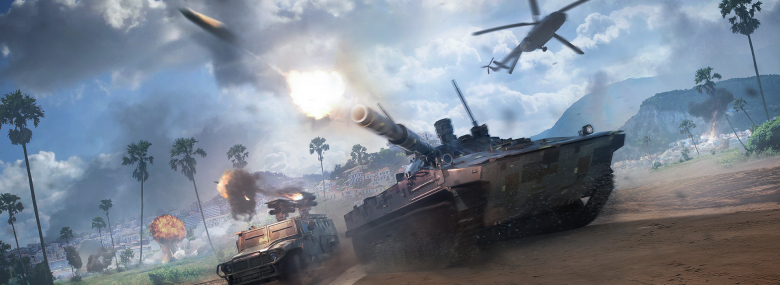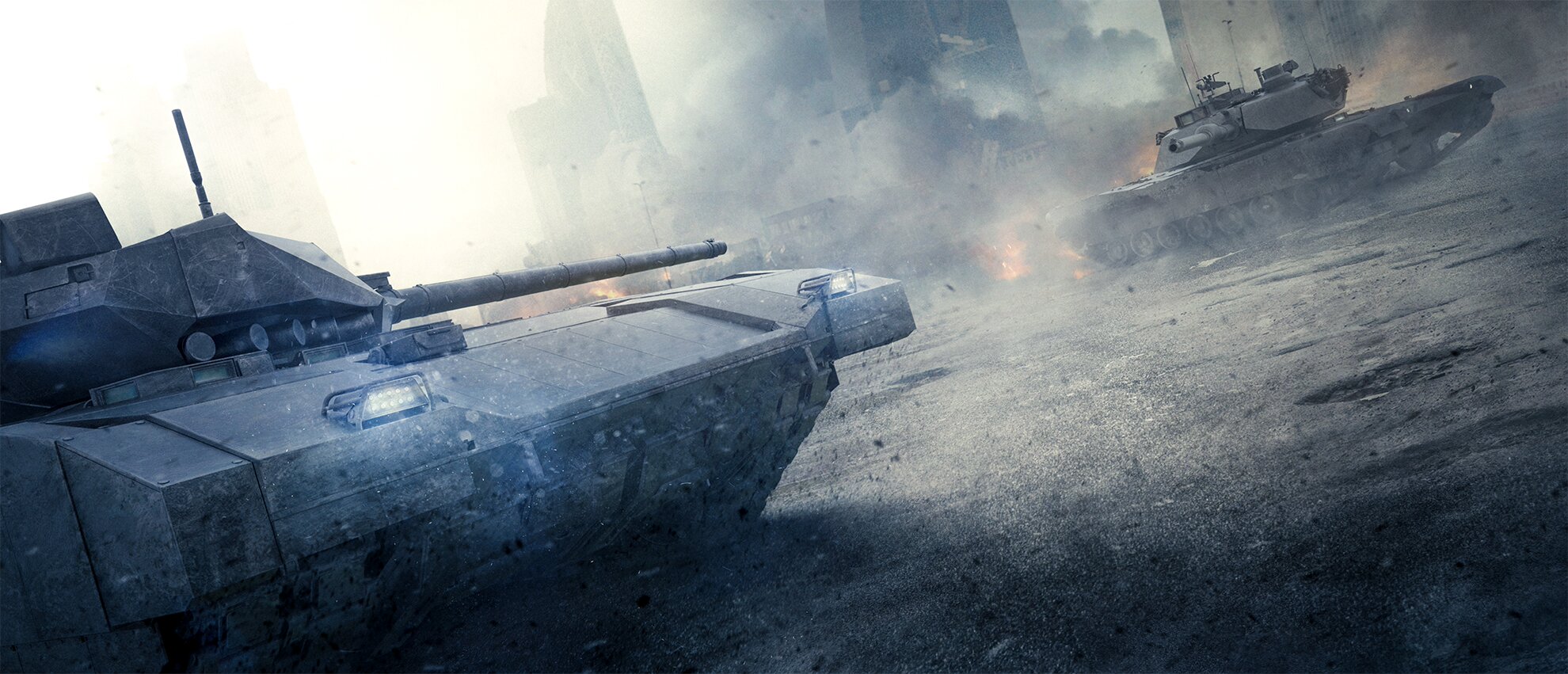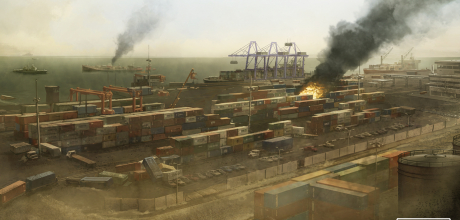
Commanders!
Today, we’d like to tell you more about the balancing process in Armored Warfare.
Balancing the vehicle properties in order for them to match their role on the battlefield without becoming too strong or too weak is a delicate process that requires finesse because the goal is not to simply produce vehicles that are balanced, but also, and perhaps more importantly, diverse.

But first, let’s talk about the basic balancing principles:
- Advancing through Tiers, the vehicles should steadily improve but, at the same time, “stock” vehicles should not feel very weak compared to upgraded ones
- When balancing a vehicle, all the three main Armored Warfare modes (PvP, Global Operations and PvE) are taken into account (more on that later)
- Each class should have its role on the battlefield
- Each vehicle within a class should have an affinity to a certain role that should be sufficiently obvious and its parameters are optimized for this role (the Challenger is, for example, a typical “tanking” vehicle that’s designed to take a lot of punishment and to resist most of the shots thrown at it)
- While “universal” vehicles are allowed and are intentionally available (such vehicles make the game accessible to newer players), many vehicles are also intentionally tuned with specific (sometimes truly unique) abilities that allow then to utilize tactics other vehicles of the same class cannot use (for example, the ADAPTIV active camouflage of the PL-01). Mastering such vehicles gives advanced players a tremendous advantage in the situations the vehicle’s unique traits were designed for, encouraging the discovery of the game and the choice of the vehicle that fits that player’s playstyle
- New whole branches are generally balanced around the same playstyle (with the exception of unique vehicle dealers such as Oscar Faraday) and share a certain theme. The first vehicles of the branch should generally show the players the overall playstyle of the entire branch with the rest of the branch building upon those foundations (for example by adding more unique traits) and finishing with a rather unique vehicle on Tier 10
- Premium vehicles are not a requirement in Armored Warfare (as all standard vehicles earn enough Credits to advance through the Tiers comfortably) and do not necessarily have to be worse compared to the progression vehicles of the same Tier. They should, however, not be significantly better overall – pay to win is not the kind of experience we are looking for
- Vehicle balance is not a static element of the game. It constantly changes with the introduction of new vehicles and features. There is no such thing as “final balance”, it is an ongoing process where vehicle properties change with each patch to reflect the changes to each vehicle’s performance that we carefully track
- Vehicle balance does not exist in a vacuum – other game elements such as commanders (notably the commander overhaul) influence it significantly and are taking into account when deciding the future course of action in the balancing process
Battlefield diversity is one of the key elements of the entire balancing process. To put it simply, if all – for example – Main Battle Tanks were the same, the class would be perfectly balanced, but also very boring to play. Our approach is to introduce a number of unique elements to many vehicles that make them very special. Some of them are obvious at first glance – for example, the acceleration active ability for the Chinese Main Battle Tanks, others are not (improved ammunition racks for the Challenger), but these too influence the gameplay a lot.
When determining the performance of each vehicle (how “balanced” it is), we are using a complex analytic method that uses more than one hundred parameters, ranging from the most obvious ones (damage taken, damage dealt) to those not as obvious (the distance each vehicle travels in battle for example). The best known of these parameters is, naturally, the winrate – the percentage of victories in the overall amount of battles played, separated by modes. Since the players are familiar with this parameter, we’ll use it to demonstrate how we approach all parameters.
When looking at vehicle parameters, we also take into account the environment they exist in, most notably the players. As such, the parameters are not a single static number, but change in accordance to (for example) the skill of a player. The same vehicle will have a different winrate for a casual player than for a Top 100 player on a server. As a result, the winrate graph looks roughly like this:

The shape of the winrate curve is an indicator that the vehicle is going fine – or not. If the curve enters the yellow and red fields, this is the first (and the most basic) alarm that there is something wrong with the vehicle. If that happens, a thorough analysis takes place to determine what the cause of the problem is, but it’s worth noting that a deviation from the ideal curve (which runs through the center of the green zone) does not tell us what is wrong with the vehicle – it’s merely an indicator.
In other words, a broken winrate is not a reason for vehicle changes; it’s an indicator that some changes should perhaps take place. There are many special situations tied to this:
- A nominally “alright” winrate curve does not automatically mean that the vehicle is correctly balanced and doing alright
- Sometimes, even vehicles with a nominally “alright” winrate curve are adjusted to become more interesting based on player feedback
- Some changes are being made based on indicators that are not openly known to players (a typical example would be the shell pricing changes that are based on the average battle income of a vehicle)
The deeper we delve into the intricacies of vehicle balance, the less intuitive some issues and changes become. One example would be a popularity of a vehicle – the higher the popularity, the lower its average winrate. However, excessive popularity can also be a good initial indicator of a broken vehicle – as a result, a potentially overpowered vehicle might have an acceptable average winrate (which is why we compare the results to player winrate).
In some extreme cases, buffing a certain property of an already well performing vehicle might, in fact, reduce its winrate – for example, if a brawler tank (like the Soviet MBTs) receives a buff to a property that makes it more comfortable to fight with at close distances, its users become more confident and start deploying it in riskier situation.
When a vehicle is investigated based on a winrate alarm (or any other reason really), we take a look at the following parameters first:
- Average Reputation per battle
- Percentage of penetrations of the enemy’s armor by the investigated (separated by armor sectors and your shell types)
- Percentage of penetrations of the vehicle’s armor by enemy vehicles (separated by armor zones and enemy shell types)
- The ability to spot its enemies
- How stealthy the vehicle is (the ratio of shells fired in an unspotted state to those fired in a spotted one)
- How good a sniper the vehicle is (the ratio of shells fired at over 300 meters to those fired in total)
- Average survival time per battle and the percentage of battles survived
This generally gives us an idea regarding where to look for issues as we dig deeper into the vehicle’s performance.
But there’s two more elements to the entire balance equation – there are also the game modes.
When looking at vehicle performance, we take a look at how it performs in all three modes and balance the vehicle accordingly. Our goal is to make sure that each vehicle performs in each mode in an acceptable manner. The word “acceptable” is the key here – it does not mean that the vehicle should have perfectly balanced winrate at the same time in all three modes.
There are vehicles that perform well in PvP but are not really all that good in PvE (typically various fragile vehicles) or vice versa (typically “damage sponges” like the Challenger series). Our goal is not to make these vehicles perform well in all modes, but to make sure that they are not completely unusable in one mode.
And last but not least, there is the third element – the player feedback.
Contrary to popular belief, we actually take feedback very seriously. When taking a look at player reactions, we are aggregating the feedback from multiple sources (including the forums, the opinions of closed player focus test groups and social media) – what interests us the most are the general opinions on certain vehicles, such as “this tank is boring” or “I am having a hard time playing this vehicle” – such feedback is a good start for an investigation into vehicle’s performance and often results in balance changes.
Other good source of feedback are proposed features that the players would like to see on specific vehicles or even which vehicles to introduce next (but that is a topic for another time). As an example of this approach, we will be returning the 20mm automatic cannon to the VBL TOW – players will get to choose which weapon system to use.
In the future, we’ll let you know of our plans to introduce even more diversity and interesting gameplay features to Armored Warfare. The year 2018 in Armored Warfare is definitely going to be exciting!
We hope this article did shed some light on the balancing process and will see you on the battlefield!








